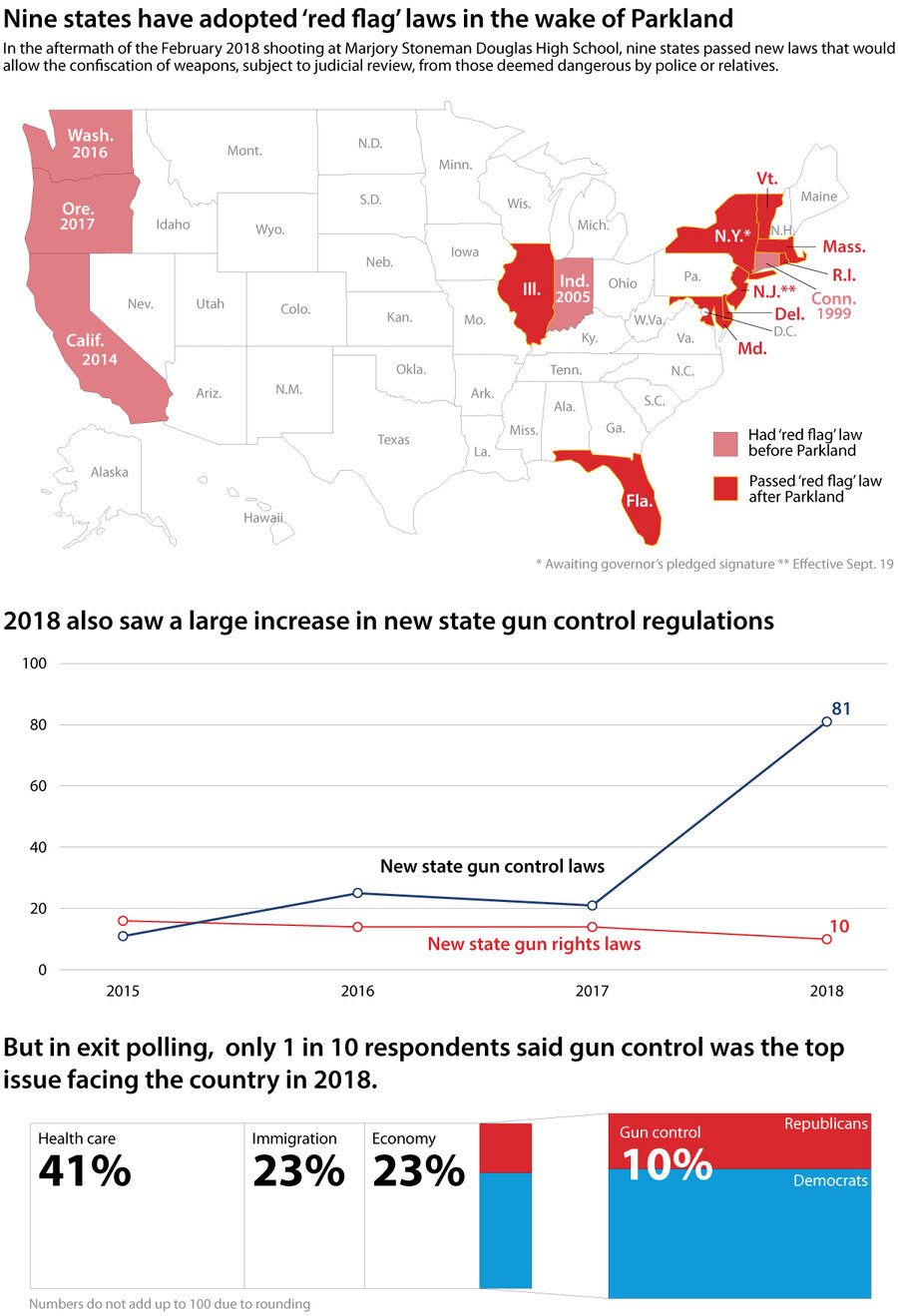One year after Parkland, what has – and hasn’t – changed
Charlton Heston once held a rifle over his head and declared the government would only pry it from his “cold, dead hands.”
It was an iconic defense of gun rights – the nearly uninhibited ability for law-abiding Americans to defend themselves.
Things have changed. A series of mass shootings – Las Vegas, Orlando, Sutherland Springs – has stymied a gun rights movement that had co-opted the language of civil rights.
Why We Wrote This
The earnest activism of the student survivors of last year’s Parkland, Fla., school shooting swayed a nation’s thinking about a generation and its conversation about guns. It helped shaped legislation, too.
Since the shooting in Parkland, Fla., one year ago today, nine states (for a total of 14) have implemented “red flag” laws that allow temporary seizure of weapons for a range of reasons, from domestic battery to social media threats. Authorities carried out at least 1,700 such seizures last year.
Five of those bills were signed by Republican governors. Today, the number of Americans who live in states trending toward more gun control has risen to 140 million from about 112 million, according to rough estimates by Adam Winkler, author of “Gunfight: The Battle Over the Right to Bear Arms in America.”
“We don’t have tens of thousands of people being rousted in the middle of the night by the police [to take their guns] and at the same time there's less patience with the endlessly gloom and doom predictions of the gun rights people that any regulation can result in gun bans and average people having ... their rights endangered,” says Robert Spitzer, author of “The Politics of Gun Control.” “That rhetoric gets dulling and not very effective after a while.”
To be sure, President Trump has installed two gun-rights-friendly Supreme Court justices. Their views will be tested in a gun rights case out of New York City this spring.
But the powerful appeals from Florida shooting survivors have led to what former Representative Gabrielle Giffords, herself the survivor of a mass shooting, calls a “tectonic shift” for gun policy in the US. It comes as the NRA has struggled with financing and become embroiled in the investigation of Russian meddling in US political affairs.
These charts explore how the youth movement launched in the wake of the Parkland shooting has shifted political thinking and the calibrating of the Second Amendment with public safety.







